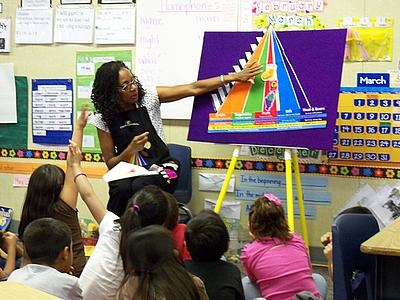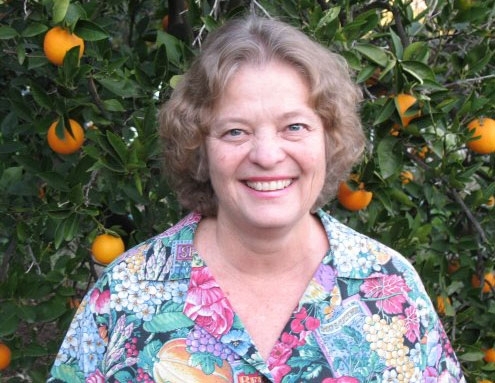Posts Tagged: gardening
Urban farms can help feed the hungry
(The Sacramento Bee published an op-ed by Rachel Surls, UC ANR urban agriculture advisor for Cooperative Extension in Los Angeles County, in its editorial pages today. The op-ed is reprinted below.)
In similar discussions around the state on the desire of residents to raise their own food with fewer restrictions, there is a core issue that should be front and center. In California, where we grow half of the country's fruits and vegetables, our own citizens too often go hungry.
Fifteen percent of households – roughly 5.5 million Californians – are “food insecure,” according to a 2013 federal report, meaning they do not have “consistent access throughout the year to adequate food for healthy active living.” Families with children are even more likely to run short on food.
We know that eating plenty of fruits and vegetables is key to a healthy diet, but not everyone has ready access to a grocery store, or can afford to buy fresh produce. One potential solution is to make it easier to grow food in backyards and on vacant land.
The University of California's Global Food Initiative aims to help the world sustainably and nutritiously feed itself. One way that UC Agriculture and Natural Resources is working toward that goal is by providing information for urban farmers and decision-makers interested in urban agriculture to improve food security in their communities. While hunger and food security are complex issues, urban farming can be used with other strategies to help ensure access to affordable, nutritious food.
And the idea seems to resonate with Californians. Interest in urban food production can be seen around California. Following strong advocacy efforts at the grassroots level, Assembly Bill 551 was passed in 2013, allowing local governments to designate urban agriculture incentive zones. San Francisco has enacted the state's first one.
Several other cities have developed local policies to promote urban agriculture. San Diego, for example, has made it easier for residents to keep chickens and bees in their backyards, and to establish farmers markets, produce stands, community gardens and small urban farms. Oakland updated its city code in 2014 to allow community gardens in most of the city without a special permit.
But obstacles to urban agriculture remain in many cities, including land use restrictions, difficulty accessing water, soil contamination and a lack of information on local regulations. After conducting a statewide study, my colleagues and I found a number of common challenges and came up with six steps that local officials can take to break down common barriers.
They are: Make zoning and regulatory information accessible; develop a transparent process for using city-owned land; create an urban agriculture incentive zone; update zoning to make it urban-ag-friendly; make water accessible while promoting efficient use; and provide guidance and support for soil testing and remediation.
An easy way to let urban farmers know what is allowed is to post information on a website, as San Francisco has done. Through AB 551, cities can entice property owners to lease their land for gardens and farms in exchange for reduced property taxes. Cities can also partner with urban farmers and local food policy councils to identify concerns and ways to address them.
In addition to health benefits, urban gardens beautify the community and provide common ground for people of different ages and cultures to work together. They can also create jobs, learning opportunities and economic savings on food. Given the numerous potential benefits, local officials can better serve their communities by making it easier to cultivate food locally.
Master Gardeners help teach kids about healthy eating
The cross-pollination of gardening with nutrition is helping UC educators get a message out to youth about healthy eating, according to an article that was published in the Riverside Press-Enterprise.
UC Master Gardener Diane King is visiting all first-grade classrooms at Romoland Elementary School to talk about food.
"You are so lucky to be living in California. Do you know why?" King asked the children. "Because California grows so many different types of fruits for the whole country. In California, we can buy fresh fruit all year round."
The program, Eating Healthy from Farm to Fork, is part of the UC Food Stamp Nutrition Education Program and offered in collaboration with Riverside County Master Gardeners to teach children about local foods and agriculture. The curriculum connects farms and school gardens to healthy eating, said Chutima Ganthavorn, the nutrition, family and consumer sciences advisor for Riverside County. "For example, the vegetable lesson talks about the edible plant parts. The Master Gardeners brought a handout about beneficial insects vs. pests and talked about growing vegetables not only in the school garden but on a larger scale," Ganthavorn said. Romoland Elementary Principal Troy Cox applauded the program, saying he couldn't be happier with what it does for students.

Diane King speaks to students at Romoland Elementary School.
Los Angeles invokes its agricultural past
Urban Farming magazine gave its readers a "whirlwind introduction" to a few Los Angeles residents and programs that are working to bring back a modicum of the metropolis' agricultural past. The first vignette in "Urban Farm Road Trip, Los Angeles" featured Yvonne Savio and the UC Cooperative Extension Common Ground Program she coordinates.
Most counties in the country have a Cooperative Extension service that dispenses agricultural, horticultural and nutritional information, the article said. But the program in Los Angeles County is unique. Common Ground trains Master Gardeners to teach low-income individuals and families how to grow their own food, wrote Erik Knutzen.
"We give people the tools to change their lives -- beautification, culture, emotional, physical and psychological health -- all the good stuff comes through gardening," Savio was quoted in the story.
Because of the tough economic times, LA County Cooperative Extension has launched the "Grow LA Victory Garden Initiative," which encourages citizens to adopt the last century's wartime tradition of growing food to help ease the burden on the nation's food production and distribution infrastructure.
The Grow LA Victory Garden Initiative helps new gardeners start their own gardens quickly and easily in a container, in the backyard or at a community garden.

Yvonne Savio
UC expert shares history of urban ag
A Los Angeles Times reporter zeroed in on remarks made by the director of UC Cooperative Extension in Ventura County, Rose Hayden-Smith, at a conference marking the opening of a new urban garden in San Marino.
Hayden-Smith, a history expert, was quoted in the second paragraph of the story and her name was mentioned five times as a source of historical information about growing food in urban spaces.
It's a present-day craze, but Hayden-Smith said it is not new.
- Ancient Romans tended rooftop gardens
- Early Americans grew food in Boston Common
- Vacant urban areas have been used as gardens for more than a century
"We're just going back and claiming our heritage," Hayden-Smith was quoted.
She encourages the resurrection of the U.S. "Victory Garden" movement to alleviate social problems like food insecurity and obesity. Recently, she said, military leaders expressed concern about the future of the armed services in light of potential recruits' weight issues.
"Let's have the Pentagon pop some bucks for school lunch," she said to enthusiastic applause, according to LA Times reporter Mary McVean.
Home gardening has 'arrived'
This week, the Philadelphia Inquirer resurrected the term "homesteading," defining it for the 21st century as a trend toward keeping bees and raising chickens, gardening and canning.UC Cooperative Extension county director Rose Hayden-Smith told reporter Virginia A. Smith that the creation of an organic vegetable garden on the White House lawn signifies the movement's arrival in the popular consciousness.
"People in national leadership are talking about these issues," Smith was quoted in the story. "I think this is going to be a very enduring feature of American cultural life."
Indicators cited in the article of the "homesteading" trend:- Up to 200,000 hobbyists keep bees in the United States, compared with 75,000 in the mid-1990s (Bee Culture magazine)
- About 100 new members a day sign up for www.backyardchickens.com, which has 55,000 members in all
- 43 million American households planted vegetable gardens in 2009, a jump of 19 percent over 2008, which was 10 percent higher than 2007 (National Gardening Association)

The new Modesto garden will attract native pollinators, such as this sweat bee. (Photo: K. Garvey)

